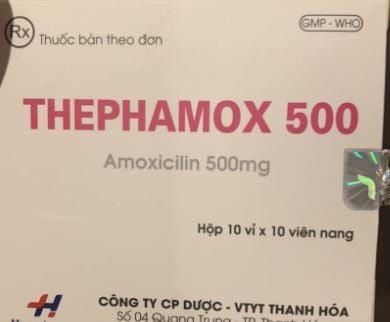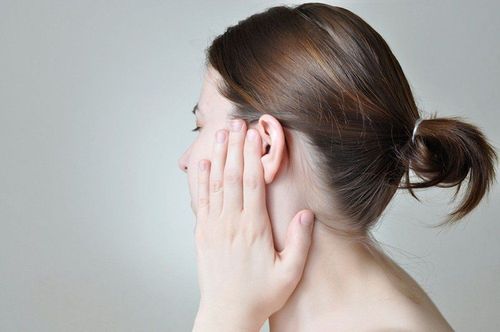This is an automatically translated article.
Otolaryngoscopy is a method that is being widely applied today. This is a necessary indication for the diagnosis and treatment of diseases of the ear, nose and throat. Endoscopy also helps the treatment process get better results, from the deep nasal passages will also be thoroughly cleaned.
1. What is otolaryngoscopy?
Otolaryngoscopy is a technique used for early detection of ENT diseases.
To perform this technique, it is necessary to use a specialized endoscope to put light into the ear, nose and throat to better observe these organs.
Otolaryngoscopy is considered the gold standard for the diagnosis of sinusitis. The images recorded by the endoscope help doctors monitor the disease more effectively.
2. When is ENT endoscopy performed?

Nội soi tai mũi họng thực hiện khi có những biểu hiện đau tai, ù tai, chảy mủ tai
Otolaryngoscopy is performed when you have the following signs:
Ear pain, tinnitus, ear discharge, ear itching, poor hearing.. There are symptoms of sinusitis such as headache, runny nose, sneezing... When you have sinusitis, you will have an endoscopy to diagnose the cause. Some causes of sinusitis can be detected such as deviated septum, hypertrophy of the hook process, nasal polyps, abnormal structure of the nasal cavity... Nosebleeds: Endoscopy helps to detect nosebleeds, bleeding point and do procedures to stop the bleeding. Hoarseness or shortness of breath Endoscopy helps detect tumors in the nasopharynx, early detection of nasopharyngeal cancer Deformities in the ears, nose .. There are symptoms of nasal congestion, when lying down, the nasal congestion increases. snort, green nose...
3. Why is otolaryngoscopy necessary?

Nội soi tai mũi họng giúp bác sĩ có thể thấy được tình trạng ở những nơi rất sâu trong tai mũi họng
Otolaryngoscopy helps the doctor to see the condition in very deep places in the ear, nose and throat with optic tubes only about 2mm in size.
The image of the internal organs obtained from the micro camera will be enlarged so that the doctor can clearly see the infection as well as recognize the changes in size and color to accurately diagnose the disease. physical.
Otolaryngoscopy also helps the treatment process get better results, from the deep nasal passages will also be thoroughly cleaned.
4. Does ENT endoscopy cause complications?
Often the complications in otolaryngoscopy come from the patient's uncooperativeness such as screaming, crying, etc., due to fear when the optic tube is inserted during the endoscopy. This can cause the patient to rub and bleed due to the collision with the optic tube. Therefore, when performing otolaryngoscopy, you need to keep your mind stable, follow the doctor's instructions, and relax your body before performing the endoscopy.
5. Notes on ENT endoscopy
To avoid complications due to ENT endoscopy, absolutely follow the doctor's instructions. At the same time, the patient also needs to concentrate when performing the endoscopic technique, need to lie down or sit still, not move, turn, or bend over suddenly.
For young children, support and cooperation from relatives are needed during the endoscopic examination. It is necessary to prepare and explain to the child in advance so that the child can cooperate during the endoscopy procedure.
When you see abnormal signs such as tinnitus, purulent ear discharge, nasal congestion... you should go to an otolaryngoscope for early detection and early diagnosis of medical conditions for timely treatment and avoid complications. serious symptoms.
Vinmec International General Hospital is one of the hospitals that not only ensures professional quality with a team of leading medical doctors, modern equipment and technology, but also stands out for its examination and consultation services. comprehensive and professional medical consultation and treatment; civilized, polite, safe and sterile medical examination and treatment space.













